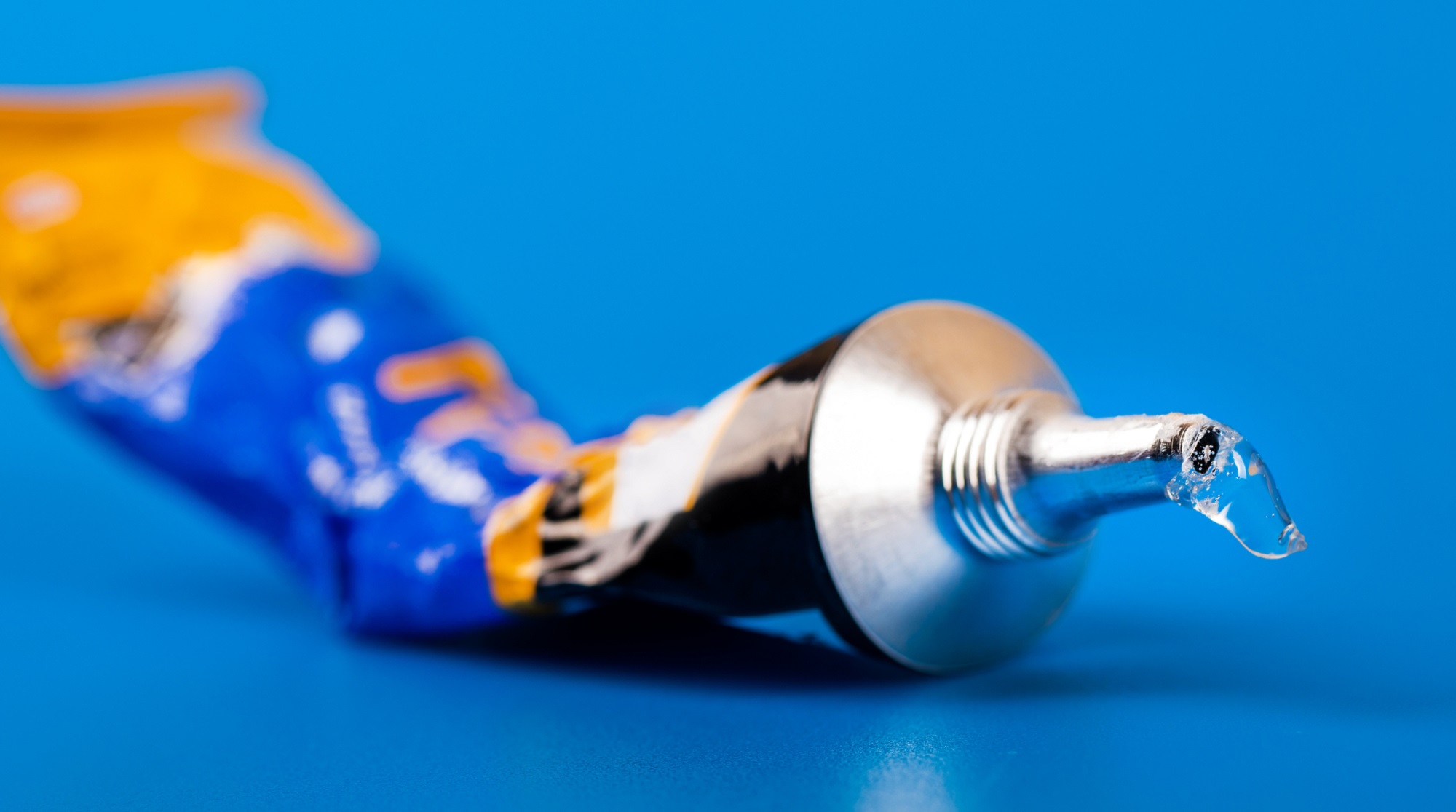

One of the greatest inventions humans ever made was by accident. It was 1942, and the US had just entered World War II after the bombing in Pearl Harbor. As Americans enlisted to fight, companies were scrambling for ways to help with the war effort. At the time, the Eastman Kodak Company in Rochester, New York, came up with the idea of a plastic gun sight that would boost the aim of Allied soldiers. In trying to make the piece, chemist Henry Coover discovered the sticky properties of a compound called ethyl cyanoacrylate, which eventually became Super Glue.
Coover abandoned his efforts at converting ethyl cyanoacrylate into a plastic and instead focused on developing the product as an instant adhesive. But the potential is still there. Super Glue has the chemical monomer needed to create plastic—someone just needs to figure out how to keep it from instantly bonding with other surfaces. Now, a study published in the journal Science Advances details a new method for easily converting Super Glue into a plastic that can be recycled repeatedly. And while it might have the potential to replace nonbiodegradable plastics, some polymers experts warn that it could introduce different kinds of pollution in the manufacturing process.
[Related: Recycling one of the planet’s trickiest plastics just got a little easier]
Super Glue reacts with a lot of different materials, says Allison Christy, a graduate research assistant at Boise State University in Idaho and lead author of the new study. This is ideal if you’re creating an adhesive because it would produce short polymers that increase elasticity. For plastic-making, however, you need long polymers to maintain durability.
The first challenge with Super Glue is stretching out its reaction time. To create long polymers, you need a longer reaction time. The authors screened for weakly bonding substances (known as initiators in chemistry) and co-reactants that would not produce a new compound once it made contact with Super Glue. They ultimately settled on acetone as their initiator with a small amount of dimethyl sulfoxide (DMSO), a colorless liquid that dissolves most organic and inorganic compounds.
Another issue the team needed to address was where to set off the reaction. Because Super Glue sticks to mostly everything, they needed a container that would not react with ethyl cyanoacrylate and let them get the plastic out without sticking to the walls. The solution: Tupperware. “Super Glue doesn’t stick well to things like polypropylene and polyethylene,” which are the main plastics in Tupperware, says Scott Phillips, a professor of materials science and engineering at Boise State University and author on the study.
Next, the team came up with a reaction that slowed down the reactivity of Super Glue, lengthened the bonding time between molecules, and created longer polymers. Once they had their resulting plastic—polyethyl cyanoacrylate or PECA—they had to work on strengthening it. Christy did this by annealing the substance, or heating it for 20 to 30 minutes to improve its mechanical properties. The thermal properties of PECA also allowed the researchers to mold the plastic into different shapes, such as a bowl.

The final step focused on sustainability. The researchers wanted to design a plastic that could be converted back to the raw materials, creating a closed-loop system that reduces waste. To do so, they heated the PECA to 410 degrees Fahrenheit to break the bonds holding the polymer together, along with a dehydrating agent called phosphorous pentoxide to remove any accidentally formed water.
The process provided a 93-percent yield of the original monomers—a “pretty shocking” result, Phillips says. “The Superglue monomer is just so reactive and I assumed it would react with everything. But it’s also volatile, so under these conditions of heating, it evaporated and that immediately separates it from all the stuff that it would normally react with.” Because materials like acetone and DMSO are cheap and readily available, Christy expects the yield to be even higher if done in an industrial setting.
“This is an interesting paper reporting on synthesizing new polymers, and may provide useful properties for use in plastics applications,” says Ramani Narayan, a professor of chemical engineering and materials science at Michigan State University and expert in bioplastics, who was not involved in the study. However, he cautions that PECA could have the same issue as other non-degradable plastics and potentially shed microplastics that would accumulate in the environment.
That’s not the only pollution concern Narayan has. He says one of the reaction steps involves evaporating chemicals like acetone, which in turn allows residual solvents to be emitted into the air. This could be an issue in manufacturing plants that carry strict guidelines for volatile organic compound emissions. Additionally, Narayan notes that two of the ingredients needed to make ethyl cyanoacrylate are chloroacetic acid and sodium cyanide, and are “not generally considered safe [for human health] or environmentally responsible.”
[Related: How companies greenwash their plastic pollution]
The study does bring up an important question: What’s the best way to deal with plastics? There are an estimated 8.3 billion tons of plastic in the world today. While green efforts encourage people to reduce, reuse, and recycle, about 79 percent of plastic sit in landfills because they are unrecyclable. For example, polystyrene is a petroleum-based plastic that is difficult to break down. Yet, it’s a common and versatile plastic that’s used in everyday products such as yogurt cups and single-use spoons. The study authors note that it makes up six percent of total plastic waste. “If people could use [PECA] instead of the polystyrene for various applications, in theory, it should reduce that six percent because we’d be able to recycle [the plastic] back to starting material again,” explains Phillips.
“We can’t get rid of plastic entirely. It’s impossible. It’s one of the most valuable materials to society,” adds Christy. “If we can use creative approaches and rethink plastic and some of the other materials around us, there are solutions out there worth pursuing.”
